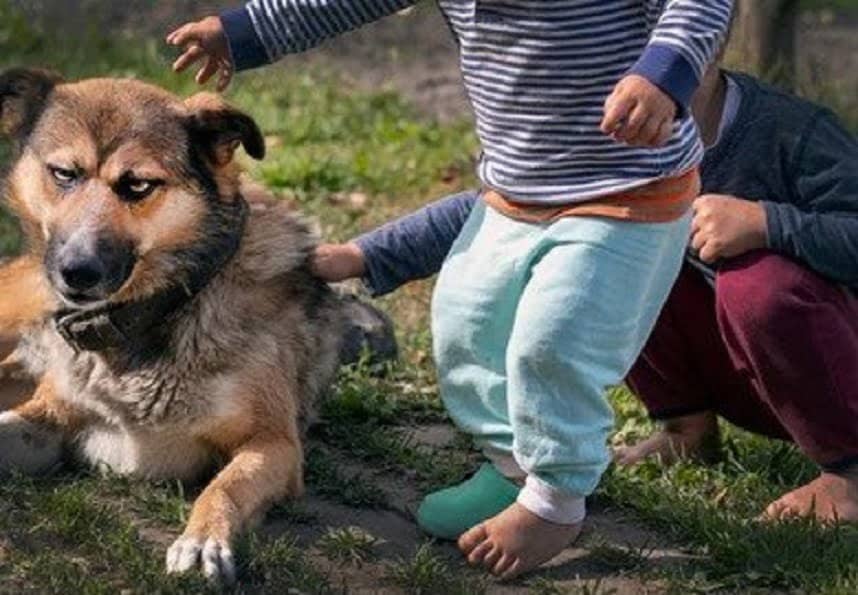Assessing the Situation
The first step in addressing your dog’s discomfort around kids is to assess the situation thoroughly. Pay close attention to your dog’s behavior and try to identify specific triggers that cause unease. By pinpointing the underlying causes, you can develop a targeted plan to address the issue effectively.
Identifying Triggers
Common triggers that can make dogs uncomfortable around children include:
- Loud noises: Sudden, loud noises such as a child’s cry or scream can startle and stress your dog.
- Fast movements: Quick and erratic movements by children can be perceived as threatening or unpredictable by your dog.
- Unfamiliar scents: Children often have distinct scents due to their active lifestyles, and this can sometimes make dogs apprehensive.
- Invasive gestures: Actions like hugging, petting too vigorously, or pulling on a dog’s tail or ears can be uncomfortable for your furry friend.
- Crowding: Dogs may feel overwhelmed when surrounded by a group of energetic children.
Understanding which of these triggers affect your dog the most is crucial for devising an effective strategy.
Seeking Professional Help
If your dog’s discomfort around kids is a persistent issue or if you’re uncertain about how to proceed, it’s wise to seek the assistance of a professional dog trainer or behaviorist. These experts possess the knowledge and experience to evaluate your dog’s behavior and create a customized training plan.
Professional trainers often employ positive reinforcement techniques to encourage desirable behavior. This approach involves rewarding your dog when they exhibit calm and appropriate behavior around children. By associating positive experiences with interactions with kids, your dog can gradually become more comfortable.
Gradual Socialization
Gradual socialization is a key element in helping your dog adapt to the presence of children. Socializing your dog means exposing them to various people, including children, in a controlled and supervised environment.
Begin with controlled interactions where you introduce your dog to calm and well-behaved children. Make sure the children understand how to interact with your dog gently and without overwhelming them. Provide treats and praise for both your dog and the children when positive interactions occur.
As your dog becomes more comfortable, gradually expose them to children of different age groups and sizes. This helps your dog learn to differentiate between various types of human interactions and become more adaptable.
Establishing Clear Boundaries
For your dog to coexist harmoniously with children, it’s essential that they understand boundaries and basic commands. This not only ensures the safety of both your dog and the children but also allows you to have better control over your dog’s behavior during interactions.
Basic Commands
Teach your dog basic commands such as:
- Sit: This command can be used to keep your dog in place during interactions.
- Stay: It’s crucial for preventing your dog from approaching children in a hyperactive manner.
- Leave It: This command can be a lifesaver when your dog shows interest in something the child has, like a toy or food.
Consistent training with these commands will empower you to redirect your dog’s behavior when necessary.
Fostering Positive Experiences
Creating positive associations between your dog and children is paramount. By ensuring that interactions are always supervised, controlled, and positive, you can help your dog build confidence and trust.
Reward your dog when they behave well around children. Use treats, toys, or verbal praise to reinforce positive behavior. This positive reinforcement will reinforce the idea that being around children is a pleasant experience.
Never force your dog into situations that make them uncomfortable. Respect your dog’s boundaries and allow them to take breaks when needed. Pushing your dog into uncomfortable situations can lead to increased anxiety and worsen the problem.
Patience and Consistency
Improving your dog’s relationship with kids is a process that requires patience and consistency. Rome wasn’t built in a day, and similarly, your dog’s comfort level around children may not change overnight. It’s crucial to remain dedicated to your training efforts and maintain a consistent approach to reinforce positive behavior.
Addressing your dog’s discomfort around children is a process that demands time, patience, and a thoughtful approach. By understanding your dog’s triggers, seeking professional assistance when needed, socializing gradually, establishing clear boundaries, fostering positive experiences, and maintaining patience and consistency, you can improve your dog’s relationship with kids and create a safer and happier environment for everyone involved. Remember, each dog is unique, and progress may vary, so it’s crucial to tailor your efforts to your dog’s specific needs and personality.
If you’re facing specific challenges or require personalized guidance, don’t hesitate to consult with a professional dog trainer or behaviorist who can provide expert advice tailored to your dog’s individual requirements.







